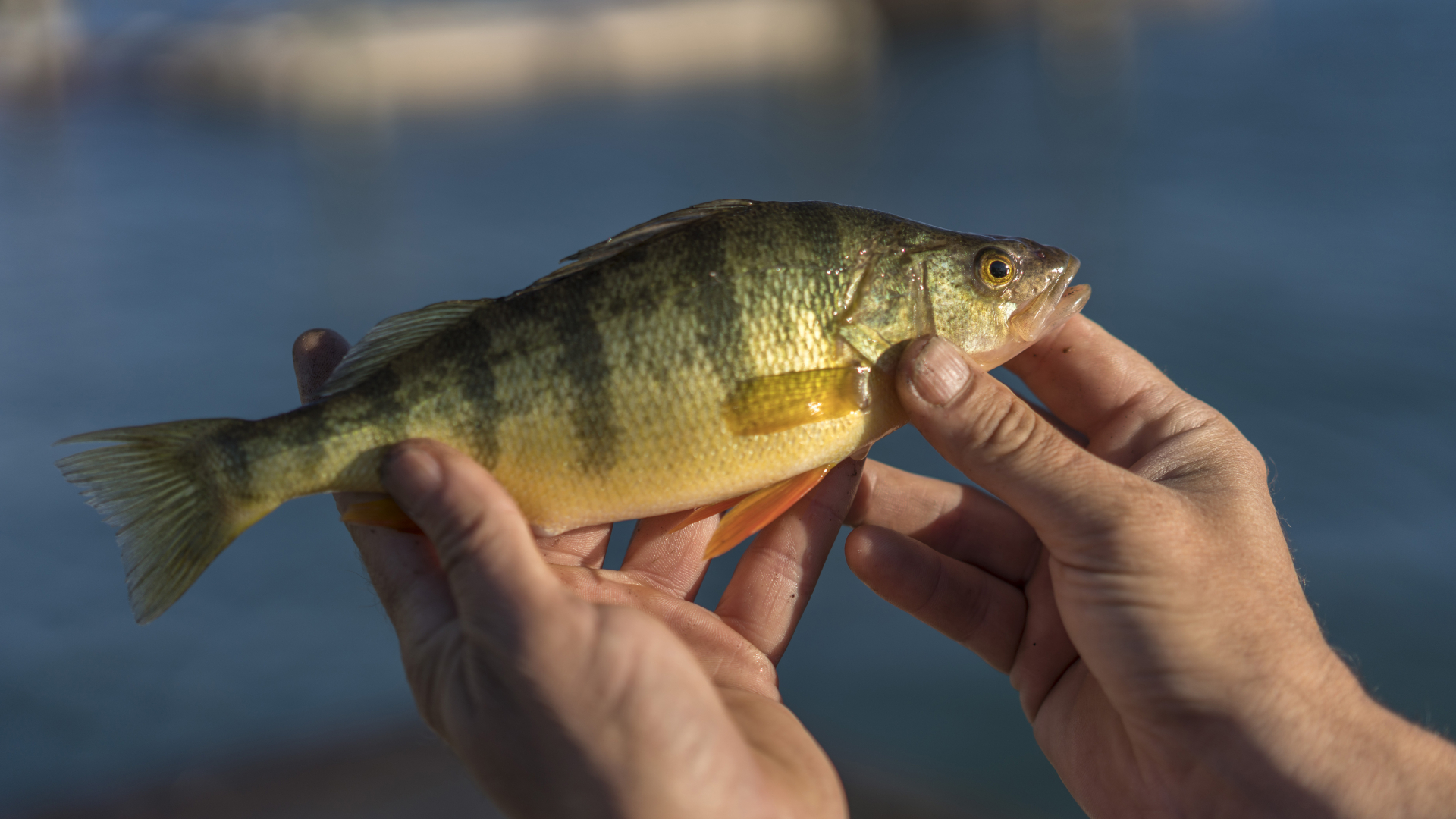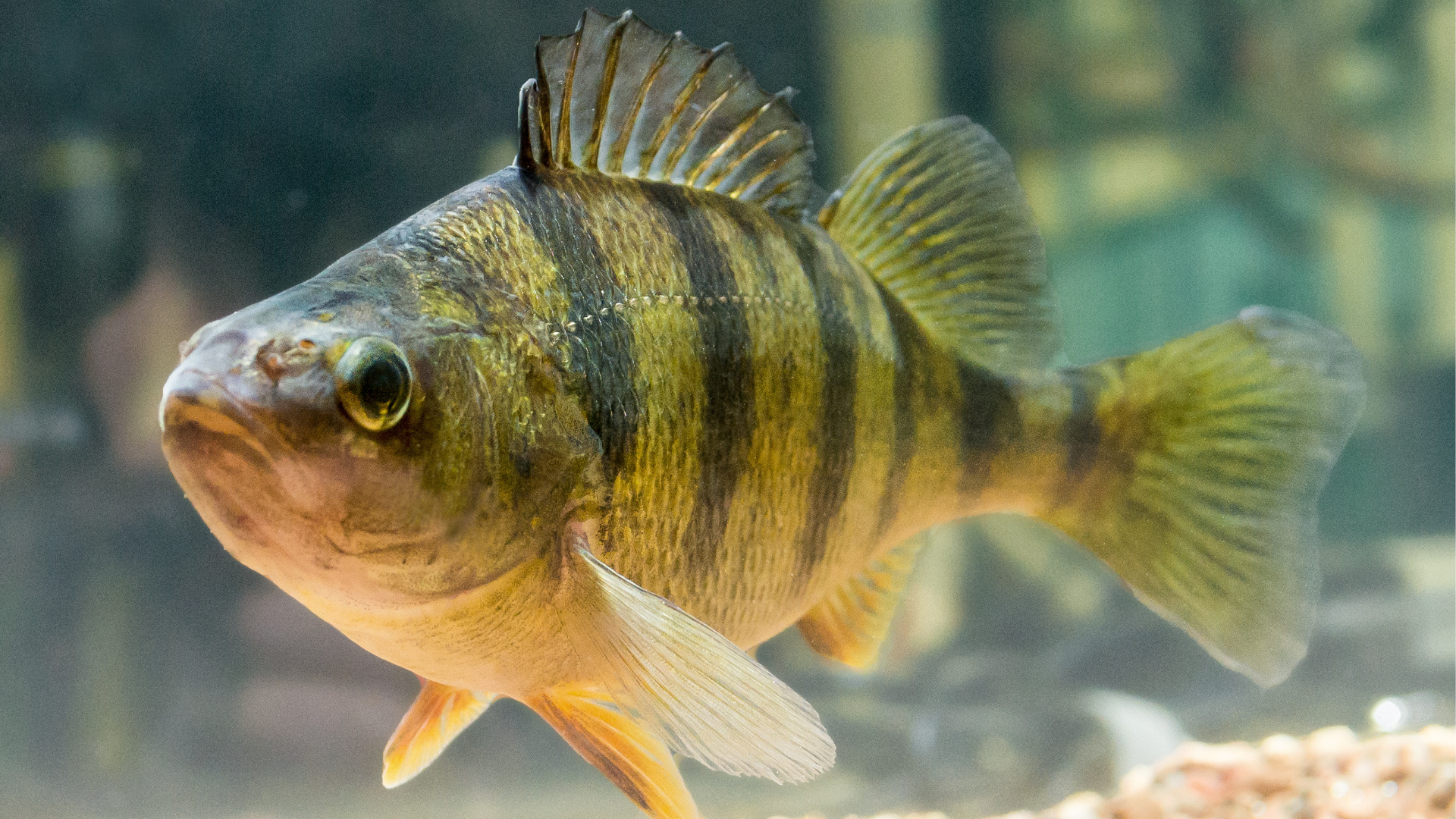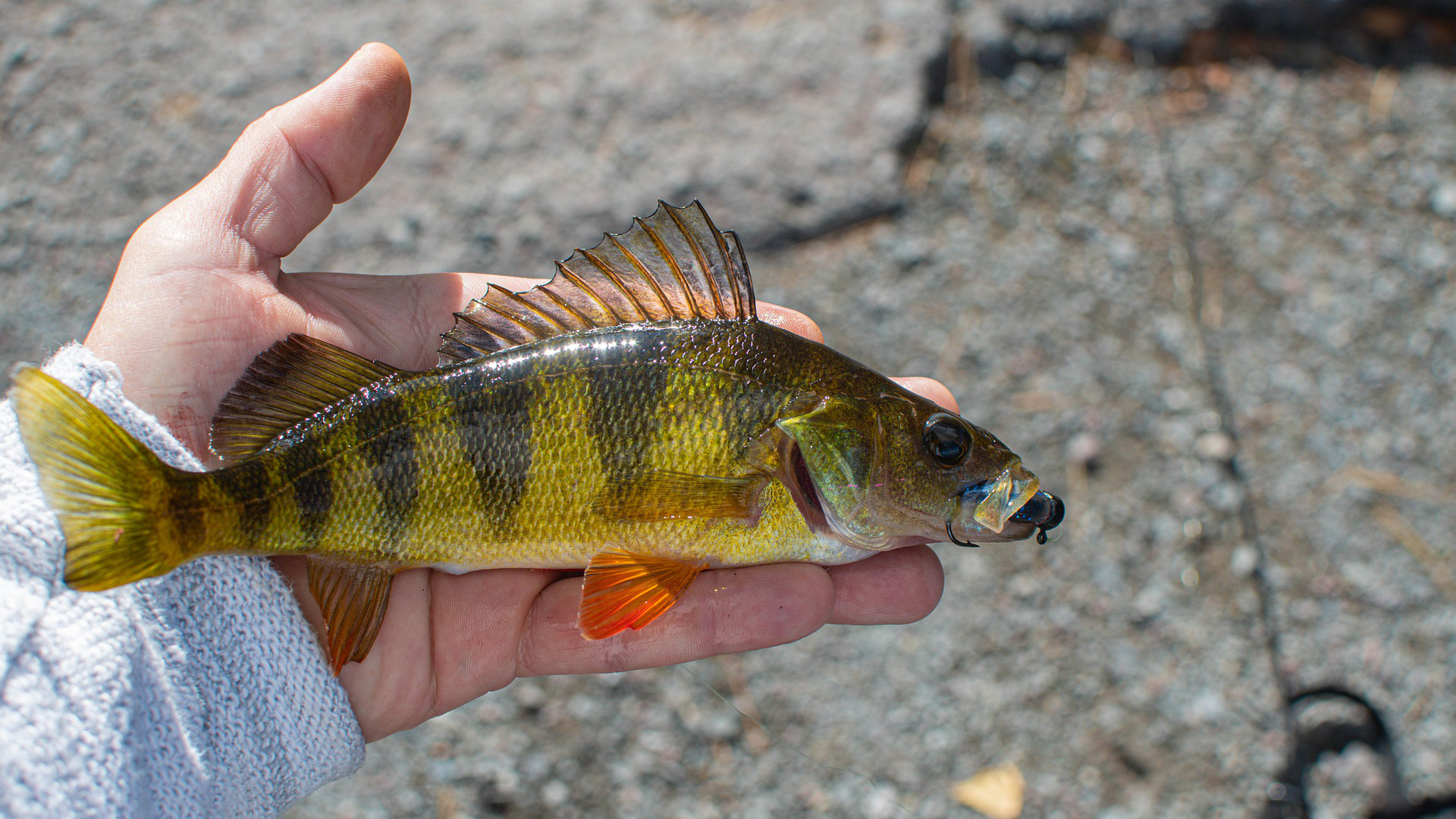How to catch perch: the best baits, lures, tackle, locations and expert tips for successful yellow perch fishing
Our experts show you how to catch yellow perch

In order to learn how to catch perch, especially yellow perch, you'll need to understand the best tactics and tackle to use, where to find them and when to fish for them. But let's start by learning about the perch itself and, in particular, the commonly–caught yellow perch.
Looking at the gorgeous yellow perch, the fish’s golden sides are slashed by six to nine vertical ebony bars, which prompted the nicknames “raccoon perch” and “ringed perch”. The lower fins often glow with vivid orange intensity, like heated metal, particularly on spawning males. They're a great looking species.
Adults usually range from 6 to 12 inches long, up to 1–2lb / 0.45-0.9kg, and like other panfish, yellow perch are highly prized on the table. They are close relatives of two other delicious fish – the walleye and sauger – and lakes where jumbo perch can be caught frequently attract numerous anglers hoping to catch these scrappy fighters for supper. Here’s how to plan a fishing trip to make sure you get yellow perch on your hook.
Where to go fishing for yellow perch
Yellow perch are very adaptable, adjusting to a wide variety of water conditions in lakes, ponds and streams. They are most common, however, in large, deep, clear lakes with sand, gravel or rock bottoms and modest amounts of vegetation. Cool water temperatures especially suit them, ideally from the mid-60s to low 70s °F (18-22 °C) .
The best perch fishing tends to be in waters across the northern half of the contiguous 48 states and throughout much of Canada, with the exception of British Columbia. The Great Lakes (other than Lake Superior) are favored destinations for many perch fans, as are many of the larger natural lakes in New England and the upper Midwest. Check state fishery agencies’ websites for listings of top waters.
You can also read Advnture's guide to the best fishing times.

The best baits, lures and tackle for yellow perch fishing
Live baits account for most perch – check out our guide to choosing fishing baits – but there are really no clear-cut favorites. Minnows are the bait of choice in some regions, while leeches and redworms get the nod in others. Other popular enticements include crickets, small crayfish or crayfish tails, and larval baits such as waxworms, mayfly larvae (“wigglers”) and maggots, or “spikes.”
Advnture Newsletter
All the latest inspiration, tips and guides to help you plan your next Advnture!
Lures also nab these delicious panfish, with small jigs, spinners and jigging spoons topping the favorites list. A good combo is a miniature teardrop spoon tipped with a waxworm.
A good ultralight spinning or spincast combo spooled with 2-4lb (1-2kg) mono works best for casting the tiny lures or baits that catch most of these dimple-mouthed panfish.
The best fishing tips for catching big yellow perch
Perch usually feed on the bottom, but they’ll rise somewhat if food is abundant above them. So, fish on the bottom first, but if your depth finder shows schools of fish swimming well above, try there too.
Fishing piers and docks are especially some of the best yellow perch fishing spots during warm months. If your favorite lake has one, pick a comfortable sitting spot, bait a lightly weighted hook with a small live minnow, release the bait to the bottom, then relax until a perch bites. Most times, that’s all it takes.
In areas where allowed, perch anglers often will remove an eyeball from a fish they’ve caught, then put it on a plain hook or use it to tip a little spoon or jig. Perch seem unable to resist these tidbits. Small strips of belly meat and chunks of cut-up minnow are also good bait choices.

The best spots to fish for jumbo yellow perch
Yellow perch are schooling fish, and typical schools of 50 to 200 fish seem to always be moving. You’ll catch perch here one week and in another spot a mile away the next. This is particularly true in late spring as perch in all but the most northern parts of their range are leaving shallow spawning sites and returning to deeper post-spawn haunts. Keeping on the move often is paramount for angler success.
The best spots for big yellow perch may be inshore near shallow breaks or in water as deep as 30ft / 9m, but most gather near underwater structures such as rocks, weed beds or channels. Check these structures, and if perch aren’t schooling there, drift with a bottom-bouncing bait rig until one turns up. Fish that spot until nothing more happens, then move again. Repeat until you find the fish.
In shallow lakes, perch might spend the summer in 15-20ft / 4.5-6m of water, while in deeper ones, they’ll gather around submerged islands, rocky shoals and points in water 20-30ft / 6-9m deep, sometimes more. Finding a soft mud bottom may help you score. That mud is full of invertebrates such as midge larvae and fingernail clams that draw perch like kids to a candy store.
When you do locate a school, fishing might start out slow. When you start catching fish, however, the commotion is likely to attract more perch and start a feeding frenzy. If that happens, take advantage. Land each fish quickly and get your bait or lure back in the water fast because another perch will probably bite immediately.
When the water cools in fall, perch will scatter all over a lake. Some will be caught fairly shallow, but larger fish tend to stay in deeper water where they remain during winter. The largest individuals usually school together and remain under the ice at depths of 15–50ft / 4.5–15.2m. Ice fishermen know it’s best not to fish too shallow in this season or you’ll miss the biggest perch in the depths.
The yellow perch is a great species for anglers of all skill levels to target and it’s easy with some simple tactics and a bit of knowledge. They feed all year round, too, so there’s no excuse not to hit the lake any time if a jumbo yellow perch is your target this season.
Keith Sutton’s passion for outdoor adventure has taken him to blue-ribbon fishing destinations on four continents, making him a true expert in his field. Along the way, he’s become one of America’s best-known outdoor writers and photographers and earned the nickname “Catfish” because of his passion for chasing those whiskered warriors. He has written 13 books, including Hardcore Catfishing, Fishing Arkansas, The Crappie Fishing Handbook and Out There Fishing, and in 2012, he was enshrined in the National Fresh Water Fishing Hall of Fame as a Legendary Communicator.

